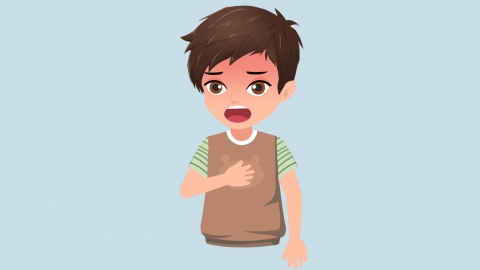Why does anxiety cause a feeling of breathlessness and suffocation, and what should be done about it?
Generally, the sensation of breathlessness or suffocation during anxiety may be caused by hyperventilation, sympathetic nervous system activation, panic attacks, anxiety disorders, asthma, and other factors. It is recommended to seek medical attention promptly, identify the underlying cause, and then improve symptoms under medical guidance through breathing regulation, medication, and other approaches. Specific analyses are as follows:

1. Hyperventilation: During anxiety, rapid breathing leads to excessive expulsion of carbon dioxide, causing respiratory alkalosis and a sensation of suffocation. Immediately adopt diaphragmatic breathing, cover your mouth and nose with your hands to create a closed space, and slowly re-breathe the exhaled air to restore carbon dioxide levels in the body.
2. Sympathetic Nervous System Activation: Anxiety can abnormally stimulate the sympathetic nervous system, leading to bronchoconstriction and difficulty breathing. Immediately stop current activities, sit down in a quiet environment, and relieve nervous excitation by listening to calming music or repeating deep breathing 10 times.
3. Panic Attack: Acute panic episodes triggered by anxiety can cause sudden, intense sensations of suffocation and palpitations, lasting from several minutes to tens of minutes. Follow medical advice to use medications such as alprazolam tablets, lorazepam tablets, or clonazepam tablets. Regular mindfulness meditation training can help enhance emotional control in daily life.
4. Anxiety Disorder: Chronic anxiety may disrupt normal respiratory function, resulting in recurrent feelings of suffocation. Patients should take medications such as sertraline hydrochloride tablets, escitalopram oxalate tablets, or paroxetine hydrochloride tablets as prescribed, along with cognitive behavioral therapy to adjust their mental state.
5. Asthma: Anxiety is one of the triggers for asthma; airway spasms can lead to breathlessness and wheezing. Medications such as salbutamol inhalers, budesonide/formoterol powder inhalers, or montelukast sodium tablets should be used according to medical advice. In severe cases, bronchial thermoplasty may be considered to reduce airway hyperresponsiveness.
To manage symptoms in daily life, avoid excessive rumination when alone and engage more in social activities to divert attention. Carry a paper bag for emergency use, maintain a light diet avoiding spicy and stimulating foods, and perform regular physical exercise to strengthen cardiopulmonary function and reduce breathing discomfort.






